




Explore Major Human Body Systems: Names, Functions & Activities
In the human body diagram for kids, (given below) you see the human body has many different parts, each with its specific function. While we all have different body systems, a healthy one is when they work together and function smoothly. If any one of these systems is not working properly, it can be easy to spot. In this article, you will learn about the elementary system of the human body and function of each body system.
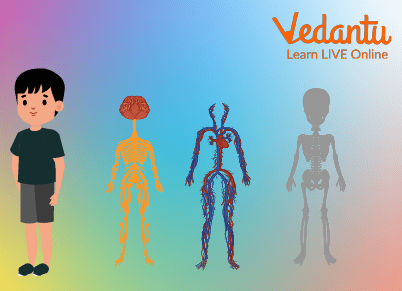
Human Body
To understand the body systems, you must be familiar with the basic structure and function of each of them. There are a lot of additional significant systems outside the respiratory and circulatory systems for kids that you may already be aware of.
Body Systems List
Muscular System
The muscular system is the elementary system of the human body as well as is responsible for movement and maintaining posture so you can balance and stand up straight. All animal and human bodies have muscles, but not all animals have the same number of muscles. Humans have more muscles than cats or dogs, and more than elephants or whales.
Fun Fact: Did you know that the largest muscle in the human body is the heart?
Skeletal System
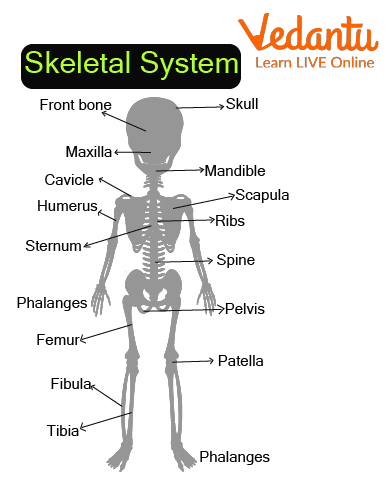
Skeletal System
The skeletal system protects vital organs such as the brain, lungs, heart, and kidneys by providing a frame of support for soft tissues of the body such as muscles, skin, and blood vessels. Bones are joined together with joints that enable the movement of different parts of the skeleton.
Fun Fact: The skull is the only rigid part of the human skeleton. The rest of the bones can move and change shape slightly.
Respiratory System
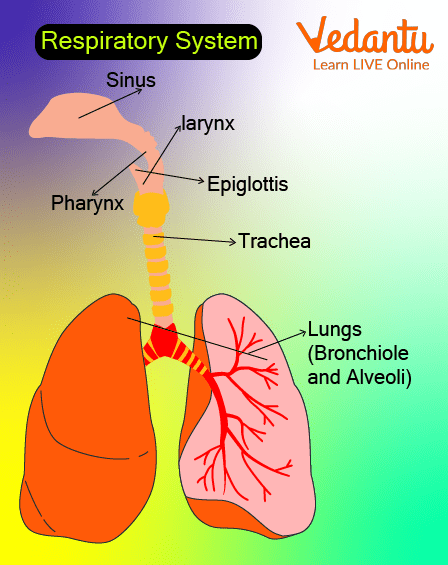
Respiratory System
The respiratory system plays an important role in bringing oxygen into your body and getting rid of carbon dioxide. You have to breathe to get oxygen from your lungs into your bloodstream so you can use it as energy for your muscles and organs. You breathe in oxygen and breathe out carbon dioxide with every breath you take. A large amount of oxygen goes from the lungs into the blood and then goes through tiny blood vessels called capillaries that make up a network throughout your body before carrying it back to the heart and lungs again.
Fun Fact: Did you know that the nose, mouth, and throat are part of the respiratory system?
Circulatory System
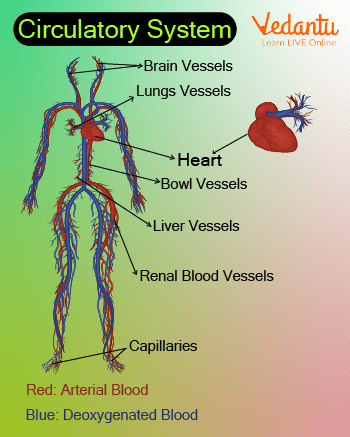
Circulatory System
The circulatory system is made up of the heart, arteries, veins, capillaries, and blood. When you hear someone talk about a heart problem, such as a 'heart attack', they are talking about a problem with the circulatory system. The respiratory system includes your nose, throat, mouth, and lungs. It is made up of structures that move oxygen in and out of your body.
Fun Fact: When you study the circulatory system for kids, you'll learn that it is responsible for delivering oxygenated blood throughout the body and removing deoxygenated blood.
Nervous System
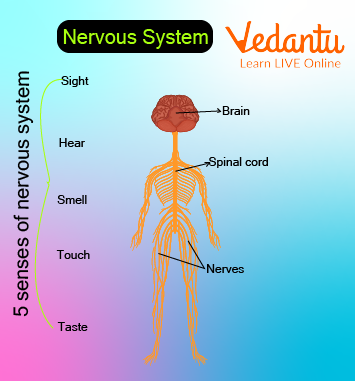
Nervous System
The nervous system is responsible for communicating information throughout your body. Information travels through the brain and nervous system to the muscles, glands, and organs. The nervous system works together with many other systems to keep you alive. It is made up of nerves that carry messages from one part of your body to another.
Fun Fact: Did you know the human brain is only 2% of the weight of your body?
Excretory System
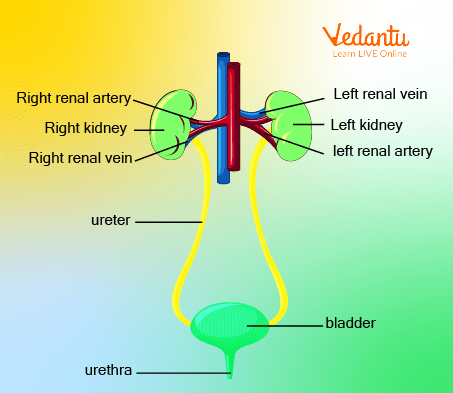
Excretory System
The excretory system is also the elementary system of the human body that takes the waste out through different methods. The kidney is responsible for delivering urine to the urinary system and passing water. The lungs are responsible for oxygenating blood and removing carbon dioxide from it. The urinary system consists of the kidneys, bladder, and ureters role of excretion of urine is to strip off excess fluid from the body through urination.
Fun Fact: The excretory system works together with the respiratory and nervous systems to get rid of waste materials.
Digestive System
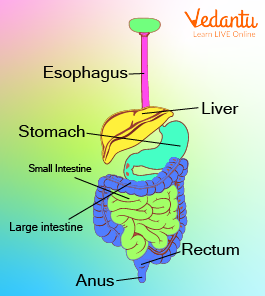
Digestive System
The digestive body system and function are responsible for chewing and swallowing the food that you eat. It takes in food through the mouth and then sends it down to the stomach where it breaks down the nutrients into tiny molecules at the cellular level. The small molecules are absorbed by the intestines and sent to all parts of your body so they can be used for energy, growth, and repair of body tissues (including muscle). Some of these molecules go into your bloodstream so that your liver, muscles, skin, and brain can use them for energy as well.
Fun Fact: The digestive system is also involved in producing energy to power your body.
Summary
You have learnt a lot about your body today, haven't you? Did you know that your body is made up of more than 50% water? In this article, you learnt some interesting and informative body systems for kids. Isn't it amazing how an individual living creature can have so many body systems listed, each one doing its specific job to keep the whole alive and well? This is why it is important to take care of your body by eating healthy foods, drinking lots of water, and getting plenty of rest. We hope you have enjoyed learning and understanding the body system and functions with the help of pictures and amazing facts of each.
FAQs on Essential Body Systems for Kids: Learn & Master Easily
1. Why do we need food?
Food keeps the body alive. As you know, our bodies are made up of tiny cells and we need the energy to keep those cells alive. Food gives us energy so we can breathe, think and sleep well at night. Our body needs food in order to function efficiently and run all systems of our body with precision. When your body system and functions run out of energy, you can become tired or ill and even die if you don’t eat or drink anything!
2. How do we know when we are hungry or thirsty?
We can tell when we are hungry and thirsty because the stomach sends out chemical signals to the brain. When you go to the bathroom or brush your teeth, those activities also send signals to your brain saying that you are hungry or thirsty and it sends a message back down to your stomach so it will make more food or water available. Thus, at all times, the digestive system stays in close contact with the nervous system in order to generate these responses.
3. What are body systems and functions?
A system is an organisation of varying numbers and kinds of organs so arranged that together they can perform complex functions for the body. Ten major systems include the skeletal, muscular, nervous, endocrine, cardiovascular, lymphatic, respiratory, digestive, urinary, and the reproductive system.









